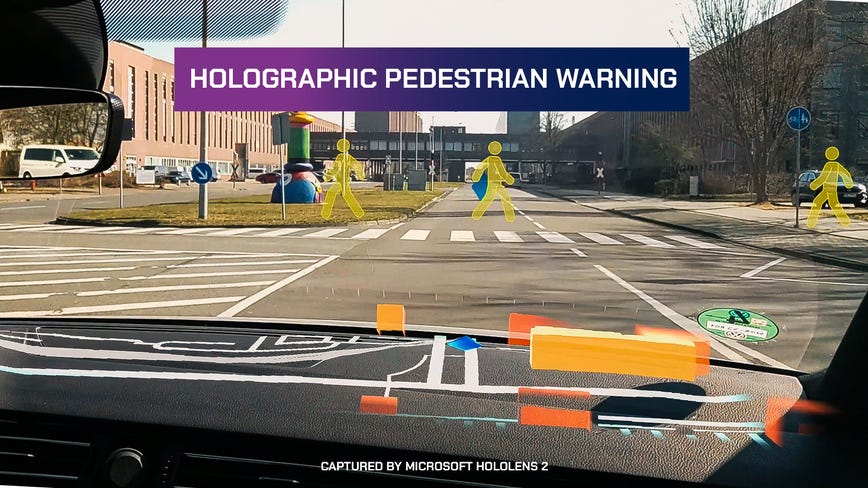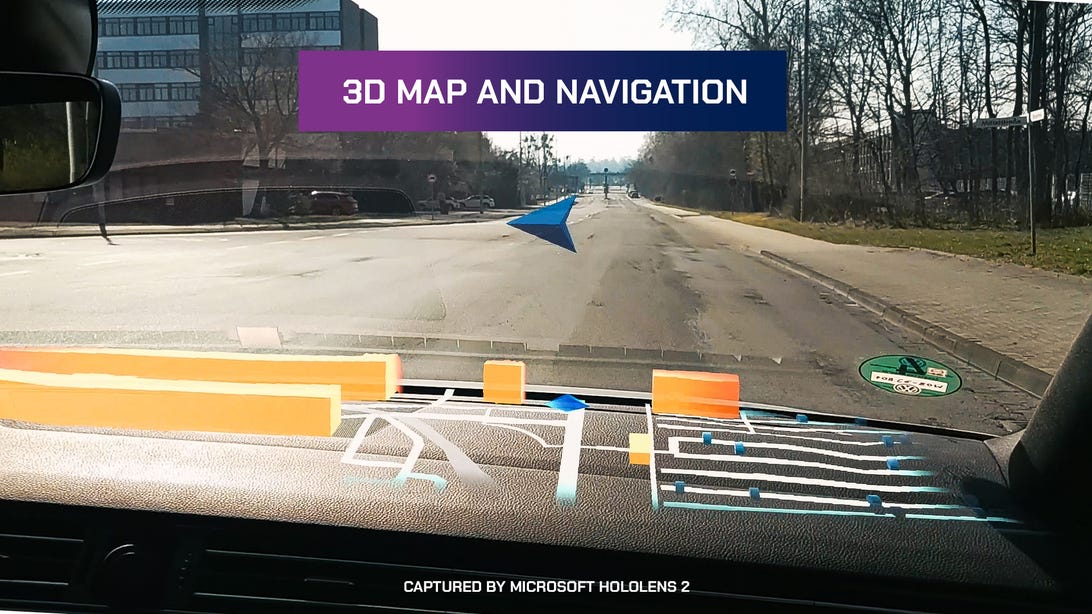Microsoft Tests Its HoloLens 2 AR Headset In Cars With Volkswagen

A sample display of how the HoloLens 2 can show heads-up data from a moving car.
Microsoft/Volkswagen
Walking around with future AR glasses on still remains an unsolved lifestyle and safety challenge. Microsoft, creator of the HoloLens 2 business-focused AR headset, are also setting their sights on AR in cars.
A new partnership with Volkswagen, announced Thursday, aims to solve current problems with AR headsets when tracking movement on faster-moving vehicles. Standing still or walking, a HoloLens 2 can scan the real world and overlay virtual objects, but tend to lose tracking when moving faster. Microsoft believes it’s starting to solve this problem with a “moving platform” mode that could work for a variety of applications: driver training, or even as a possible way for passengers to use AR while in autonomous vehicles.
Microsoft isn’t the only company exploring the boundaries between cars and AR technology. Meta announced a partnership with BMW last year to examine safety issues with wearing future smart glasses while driving, and Finnish VR/AR headset-maker Varjo has been using its mixed-reality headsets with Volvo to model safety features on test cars. Many auto manufacturers are also already incorporating heads-up displays with AR features into their dashboards. Volkswagen has already developed its own AR heads-up displays for some of its vehicles.

A concept of how holographic navigation could look.
Microsoft/Volkswagen
The system Microsoft is developing with Volkswagen will sync cars and the HoloLens 2, allowing for potential AR interfaces to be added to car interfaces, as well as adding holographic AR to parts of the moving outside world. While the current partnership sounds very focused on future research, Microsoft’s moving platform AR tech is already being applied to uses on ships, and the company plans to apply future uses to elevators, trains, and other “moving environments.”?
Microsoft’s HoloLens 2 has already been focused on uses that can allow remote assistance in work environments, and the company’s recent partnership with Qualcomm points to smaller, more consumer-focused AR glasses in the future. Besides making AR glasses safe to use while on vehicles, companies still need to figure out how to make them work.